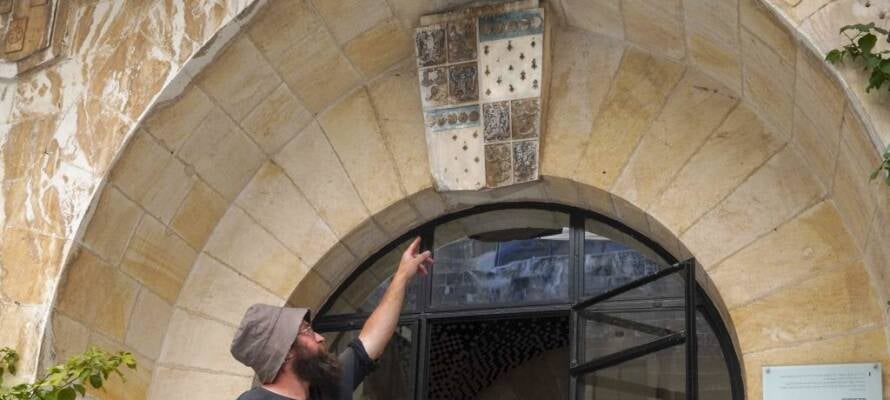An exhibition about the coats of arms will open to the public at the Jerusalem House of Quality on June 20.
By Pesach Benson, TPS
The walls of a historic Jerusalem building have revealed a rich tapestry of early 20th-century British nobility and royal insignias, thanks to new research conducted by the Israel Antiquities Authority.
In a groundbreaking study, Shai Halevy and Michael Chernin of the Israel Antiquities Authority meticulously mapped and identified these historical emblems on the walls of one of modern Jerusalem’s first hospitals.
Established by the Order of Saint John in 1882, this ophthalmologic hospital played a crucial role in treating eye diseases prevalent in the Holy Land and served patients from across the Middle East.
The hospital, overlooking the Hinom Valley and facing Mount Zion near the Old City walls, expanded significantly during the British Mandate period, with a new wing funded by contributions from British royalty and businesspeople, many of whom were members of the Order of St. John.
In recognition of their support, the walls of the hospital were adorned with their coats-of-arms.
Over time, the building’s various parts underwent significant changes. The eastern wing became the Mount Zion Hotel, while the western wing was repurposed as the Jerusalem House of Quality, an art and culture exhibition center.
The tumultuous events of World War I and the 1948 War of Independence left their marks on the structure, and as the decades passed, many of the coats-of-arms were damaged or forgotten.
The recent efforts by Halevy, Chernin, and illustrator Anastasia Prokofieva have successfully identified 18 out of the 23 visible insignias, which belonged to British nobility.
These include the arms of King George V (ruled 1910-1936), Major General Aldred Lumley, 10th Earl of Scarbrough (1857-1945), the famous Irish brewery magnate Edward Cecil Guinness (1847-1927), high-rise architect Henry Busis (1881-1965), and shipbuilder Henry Grayson (1865-1951).
Among the shields is that of Jewish aristocrat Sir Edward Stern (1854-1933), uncle of philanthropist Vera Salomons, founder of the L.A. Mayer Museum for Islamic Art in Jerusalem.
“These walls continue to talk to us and reveal Jerusalem’s history,” Dr. Amit Re’em, Israel Antiquities Authority Jerusalem Regional Archaeologist said.
“During the ongoing major renovation project at the Mount Zion Hotel, a dedication inscription attributed to John Mason Cook, a great contributor to the hospital, was uncovered. He and his father founded the first modern travel company, Thomas Cook & Son, which remains in existence today. Exploring other abandoned rooms of the former hospital revealed another dedication by Genevieve Watson, a prominent Jerusalem personality and benefactor, who dedicated her life and wealth to the hospital,” he explained.
Additionally, the researchers discovered a stone with a mysterious inscription cast in the Hinom Valley below the hotel, identified as the hospital’s cornerstone. “For us, archaeology does not stop in ancient times; these are relatively modern finds. But in addition to our other responsibilities, we are investigating that which will become archaeology in the future,” Re’em stressed.
An exhibition about the coats of arms will open to the public at the Jerusalem House of Quality on June 20.
